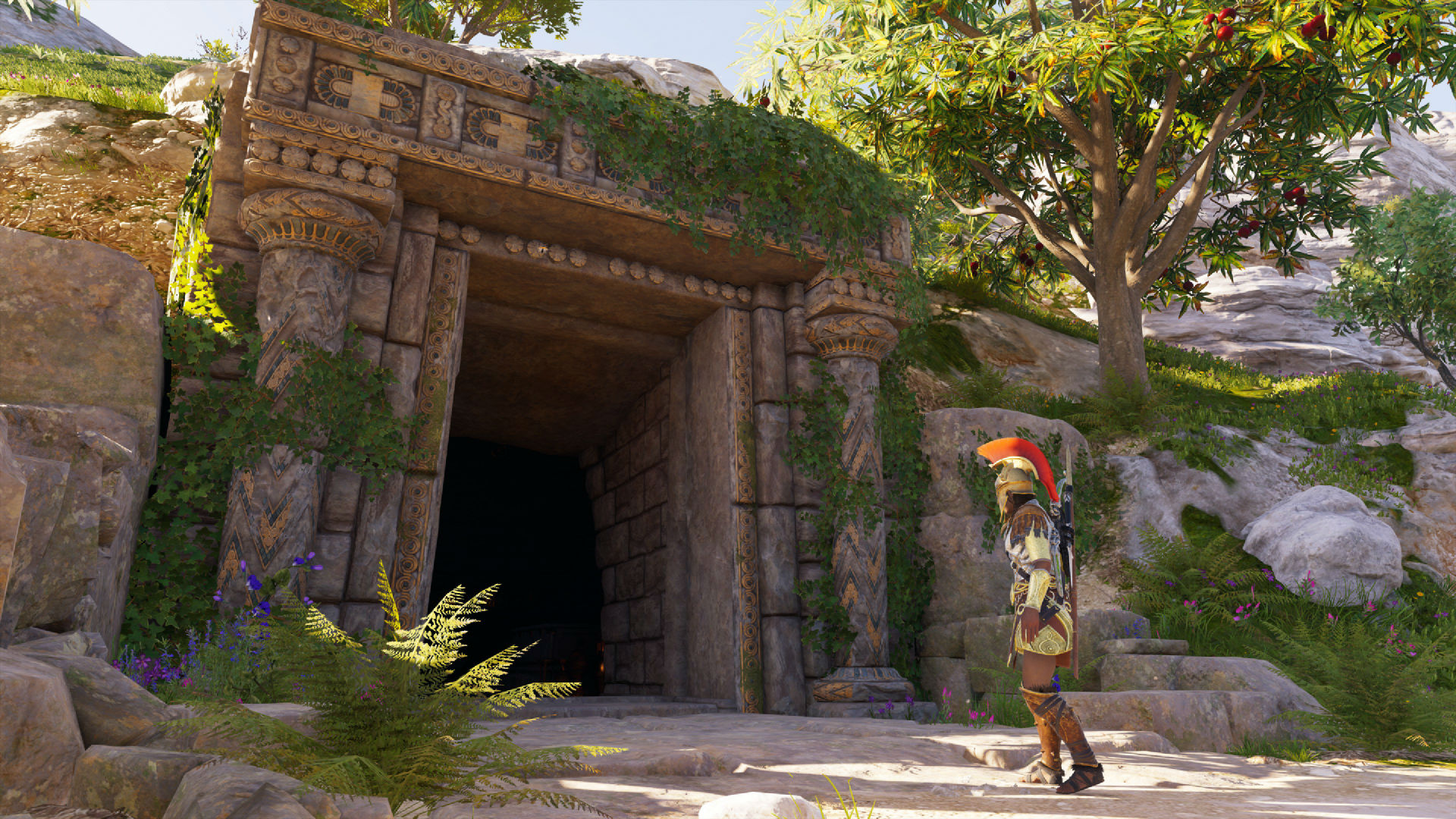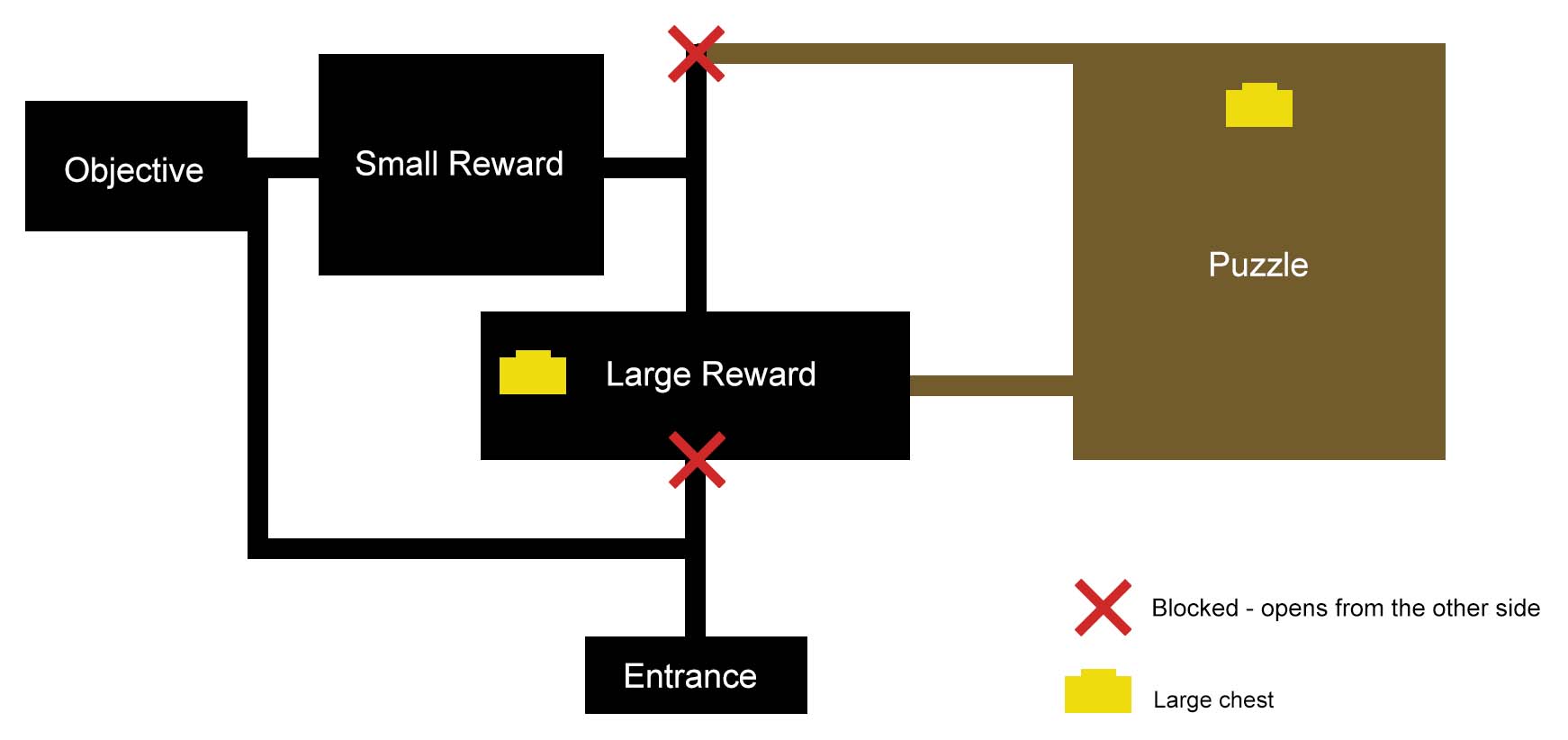As a level designer on Assassin’s Creed Odyssey at Ubisoft Quebec my primary role was to be the owner of the Boeotia region in the game. As the level design owner some of my responsibilities included:
- Designing and building the gameplay content in the region (Forts, Bandit Camps, Tombs, other gameplay POIs)
- Implementing all the technical requirements for gameplay (AI pathfinding, gameplay ingredients)
- Ensuring navigation in the region is smooth and player progression is logical (road networks connect primary and secondary POIs, roads are functional)
Due to my flexibility and adaptability, I was also frequently given other level design tasks all over the map. Some examples were:
- Going to different locations in the game, such as other Forts and POIs, and adjusting gameplay/navigation to match the benchmark
- Populating different regions with minor gameplay POIs
- Doing a pass on roads and other navigation
FORT of PLATAiA
Fort of Plataia is a Fort in Boeotia. Using actual history of Plataia in Ancient Greece as inspiration, I designed and built this fort to resemble a small city. The fort was designed with gameplay pockets as a guiding principle. Each space of the city, such as stables, living quarters, military barracks and temple, were designed to give the player enough space and opportunity to play their own way. Each pocket contained:
- Metric-appropriate space for melee combat
- Ample cover for a stealthy approach
- Balanced line-of-sight for a ranged battle
- Gameplay ingredients such as oil jars and burnable haystacks
Each of those pockets also needed to feed into one other and be connected with smooth navigation and pathing for both player and AI. Designing with pockets in mind allowed the player to engage one group of enemies without aggro-ing the entire fort. Due to the mixture of high and low ground, open spaces and tight corridors, there are ample opportunities for the player to also break line-of-sight and escape pursuit.


The fort was also designed on an incline to guide the player’s eye and movement upwards towards the fort’s ley structures, the MIilitary Tower and the Temple. The Military Tower is a strategic central point of the location, housing the Reinforcements Bonfire that the players can trap. It also gives the player a very advantageous vantage point of most of the fort. The Temple is the highest place of the fort, design to attract residents of the city and have them walk upwards through the city to reach the Temple of their God, resembling many other such design from Ancient Greek history. The Temple also houses Regional Resources, a key objective the player has to interact with. Leading lines, enclosure and landmarks were among the key level design ideas in creating the fort and shaping the player’s experience within it



Melanippos bandit camp
With Melaniposs Bandit Camp I challenged myself to build the only Bandit Fort in the game. I wanted to create a unique location for the Bandit faction in Assassin’s Creed Odyssey that would make my region of Boeotia more memorable.
The Bandit camp is built as a fortress on a river going into the region. Thematically, the camp was designed as a location that controls boat traffic in and out of the Boeotia. The camp is built on both river banks, and the two sides provide different gameplay opportunities.
The Northern bank is designed around:
- Vertical gameplay. Multiple connected pathways cover a large area of the rocks where the camp is built, taking the player as low as the water and as high as the lookout tower on the West side of the camp
- Stealth. Each of those connecter pathways are fairly narrow. Their layout, coupled with careful placement of AI patrols, gives the stealthy player more of an advantage
The Southern bank is designed around:
- Combat. There is less emphasis on stealth (although still possible) and large, open spaces near the entrance favour melee combat
The entire camp is great for:
- Ranged combat. Multiple vantage points, small hidden pockets and strategic placement of AI all over the camp allows the player to pick off enemies at range with their bow.


The two sides of the camp are connected with two large bridges, to avoid creating one large chokepoint, as well as ziplines that feel fun for the player and open up potential assassination opportunities.
Tomb of orion
- Take the main path, reach the Objective, collect it and backtrack
- Go forward from the objective, reach the big Reward Room (previously blocked off), collect the loot, open the door and exit
- Discover and continue exploring the optional side path, collect more rewards, loop back onto the main path, complete the location 100% and exit


I used appropriate pacing and flow on the player’s journey through the Tomb. First, I introduced the mechanics the player will encounter in the tomb:
- Snakes
- Oil jars
- Floor hazards
- Vaulting
Once the player saw what they are about to encounter, I started putting these mechanics into different beats of easy, medium and challenging difficulty all the way through to the Large Reward room. If the player were to continue further, to break up the flow and keep the experience interesting I designed a puzzle for the player to overcome on the way to 100% completion. Hidden paths are always suggested though the visual language and the set dressing along the player’s path.


